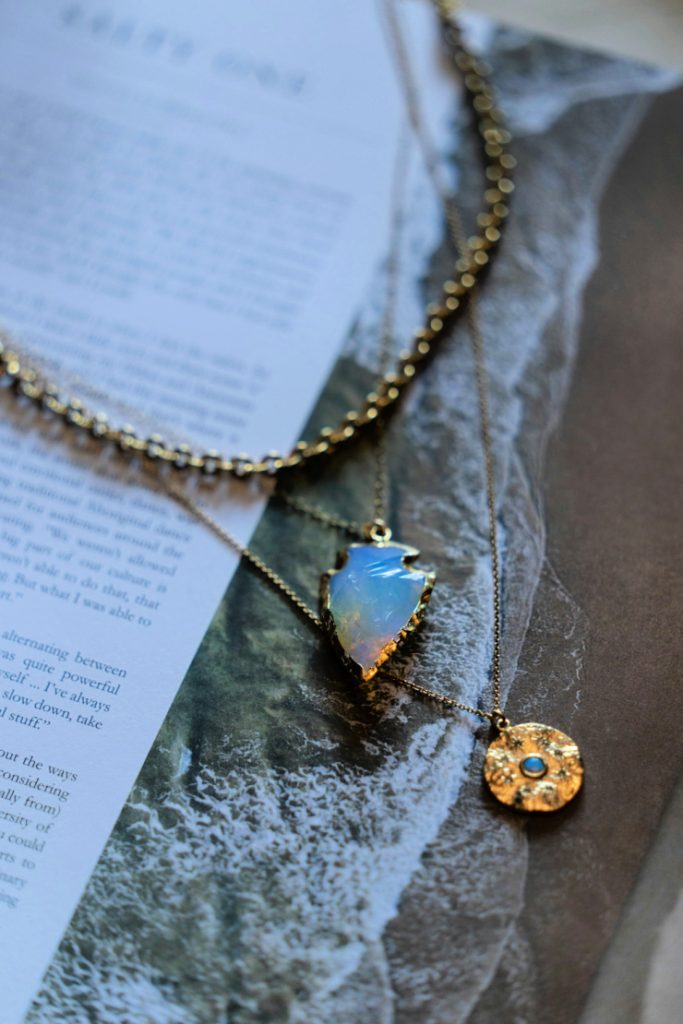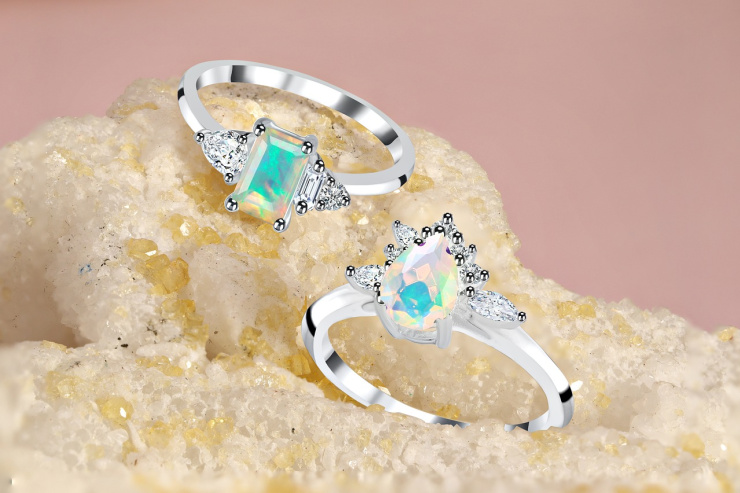Opal jewellery has an exquisite beauty that is unrivalled. Each opal has a unique quality being a natural substance and no two opals are alike. If you are looking for opal jewellery though you may wonder how to choose the best quality for your budget. So let’s look at what you need to know when buying opal jewellery.
Understanding Opals
Before you start shopping, it’s crucial to understand what makes opals unique. Opals are known for their ability to diffract light, creating a phenomenon known as play-of-colour, where a spectrum of colours can be seen shifting within the stone.
Types of Opals
Black Opal: With a dark body tone, black opals display the most vibrant play-of-colour. They are primarily mined in Lightning Ridge, Australia, and are among the most valuable opals.
White Opal: These opals have a light or white body tone and a more subtle play-of-colour compared to black opals. They are commonly found in South Australia.
Boulder Opal: Boulder opals are unique as they contain fragments of the host rock within the gem. They often exhibit a dark body tone and vibrant colours.
Crystal Opal: Transparent to semi-transparent, crystal opals allow light to pass through, enhancing their play-of-colour. They are prized for their clarity and bright colours.
Fire Opal: Unlike other opals, fire opals may not exhibit play-of-colour. They are known for their fiery red, orange, or yellow hues and are mainly sourced from Mexico.
Evaluating Opal Quality
When purchasing opal jewellery, several factors determine the quality and value of the opal. Understanding these will help you make a better choice. These include colour and pattern, clarity and cut and budget.
Colour and Pattern
The play-of-colour is the most critical factor in an opal’s value. Look for opals with bright, vibrant colours and a broad spectrum of hues. The more intense and varied the colours, the more valuable the opal.
Opal patterns can vary widely, including types like pinfire, harlequin, and broadflash. Symmetrical and unique patterns are generally more desirable. The arrangement and distribution of the colours and patterns significantly affect the overall appeal of the opal.
Clarity and Cut
Clarity in opals refers to the absence of inclusions and the transparency of the stone. In crystal opals, look for clear, transparent stones with visible play-of-colour. In other opals, inclusions can sometimes add character, but excessive inclusions can detract from the gem’s beauty.
The cut of the opal influences its appearance and durability. Opals are often cut into cabochons (domed shapes) to enhance the play-of-colour and protect the stone from damage. The quality of the cut should ensure that the opal displays its colours to the best effect.
Be aware of doublets, which are a thin layer of opal glued in two sections. These may appear to be opals but they are vastly cheaper than solid stones.
Setting a Budget
Opal jewellery comes in a wide range of prices, from affordable to very expensive pieces. Establishing a budget beforehand will help you narrow down your options. Keep in mind that the type of opal, its quality, and the craftsmanship of the jewellery setting all influence the price.
Natural vs. Synthetic Opals
Be aware that synthetic opals are available and can be quite beautiful, but they do not have the same value as natural opals. Synthetic opals are created in a lab and typically have a more uniform pattern and colour. Always ask the jeweller if the opal is natural or synthetic and verify this with certification. Quality opals are always worth paying for.
Authenticity and Certification
When purchasing opal jewellery, especially high-value pieces, it is crucial to ensure the authenticity of the opal. Reputable jewellers should provide certification from a recognised gemological laboratory. This certification verifies the type, origin, and quality of the opal.
Tips for Purchasing Opal Jewellery

Research Reputable Jewellers
Look for jewellers with good reviews and a solid reputation. It is often best to buy from a jeweller who specialises in opals. Also, look for membership of the National Association of Goldsmiths (NAG) as this is a reputable body for quality jewellers.
Ask Questions
Don’t hesitate to ask about the origin of the opal, the type, the quality factors, and the setting. A reputable jeweller will be happy to provide this information.
Compare Options
Look at several pieces of opal jewellery before making a decision. Compare the quality of the opals, the design of the settings, and the prices. There is a wild array of opal necklaces, earrings and bracelets available so it’s important to choose wisely.
Examine Under Different Lights
View the opal under different lighting conditions to see how the colours change. Natural light, especially, can help reveal the true beauty of the opal.
Aftercare
Once you have purchased your opal jewellery, you need to care for the items to maintain their beauty and lustre.
Avoid Extreme Temperatures
Opals are sensitive to temperature changes, which can cause cracking. Avoid wearing your opal jewellery in extreme hot or cold environments.
Keep Away from Chemicals
Household chemicals, perfumes, and lotions can damage opals. Apply these products before putting on your jewellery. Always put your opal jewellery on after you’ve used hairspray and perfume.
Clean Gently
Clean your opal jewellery with a soft, damp cloth. Avoid ultrasonic cleaners and harsh chemicals as opals are porous.
Store Properly
Store your opal jewellery in a soft pouch or in a jewellery box to protect it from scratches and sunlight.
Conclusion
Opal jewellery is beautiful, unique and cherished by many. I hope this article has helped you in your quest to find the perfect opal necklace, earrings, bracelet or ring.

